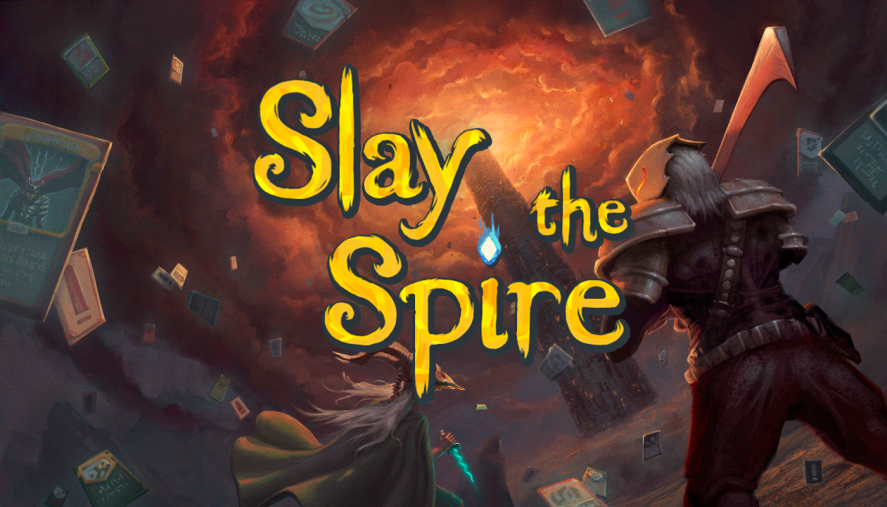
Mega Crit’s deckbuilding roguelite Slay the Spire is the latest success story that gamers and critics alike are citing as an example of Early Access done right. When the game launched in November 2017 it already had a great foundation with plenty of content to play through, even in its early and unfinished state. The game only got better from there, and eventually added an additional character and even more cards, items, events, encounters, and features. It didn’t gain a huge following in Early Access for nothing, and today I’m here to tell you why you should check it out.
Slay the Spire
Publisher: Humble Bundle
Developer: Mega Crit Games
Platforms: PC (Reviewed), Mac, Linux
Release Date: January 23rd, 2019
Players: 1
Price: $24.99
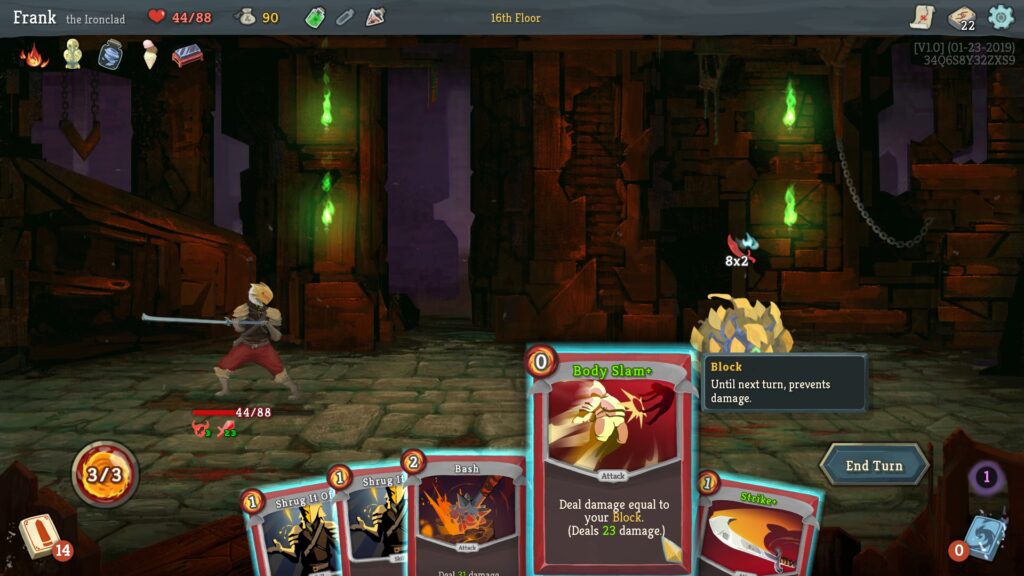
Slay the Spire is a deckbuilding roguelite where the goal is to take a character with a crappy starting deck and work your way up increasingly difficult levels, all while drafting new cards into your deck and gathering an arsenal of mystical artifacts.
You start your run by choosing your path through a map, selecting interconnected “nodes” with icons that represent various encounters. These encounters can be battles, treasure chests, elite enemies, random events, vendors, or campfires, with a boss fight at the end of each level.
Random events generally come in the form of a text-based encounter where you are given multiple options that can result in rewards like new cards, gold, or powerful relics. Sometimes these events also have negative consequences, such as damaging you or placing negative cards in your deck.
Campfires are the salvation of every weary traveler, and give you a chance to either rest to recover 33% of your health, or upgrade a card in your deck. No matter the path you choose, there will always be a campfire waiting for you right before the boss fight.
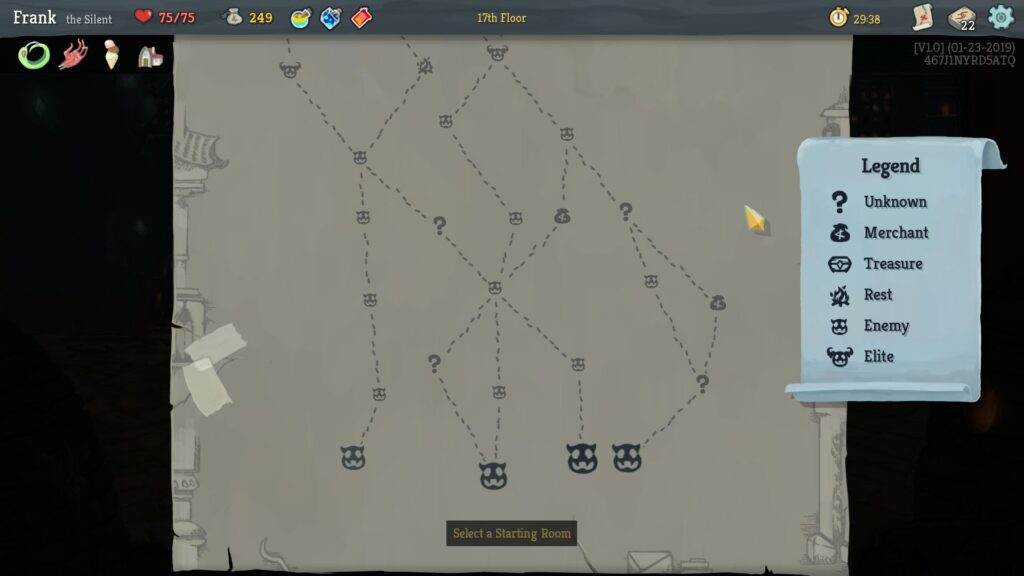
Combat encounters are the real meat of Slay the Spire, and the game features a robust and fun card-based battle system. Its very easy to pick up for anyone that has prior experience with deckbuilding games, but incredibly challenging to master.
Each card has a Energy cost, and by default you get three energy per turn. Cards come in the form of attacks, skills, and powers. Attacks are obviously about damage, while skills can do anything from drawing additional cards to applying buffs, debuffs, or giving you Block.
Block is your primary means of protecting yourself from damage, regardless of the character you chose. Powers apply some sort of buff or special ability that sticks with you the rest of the battle.
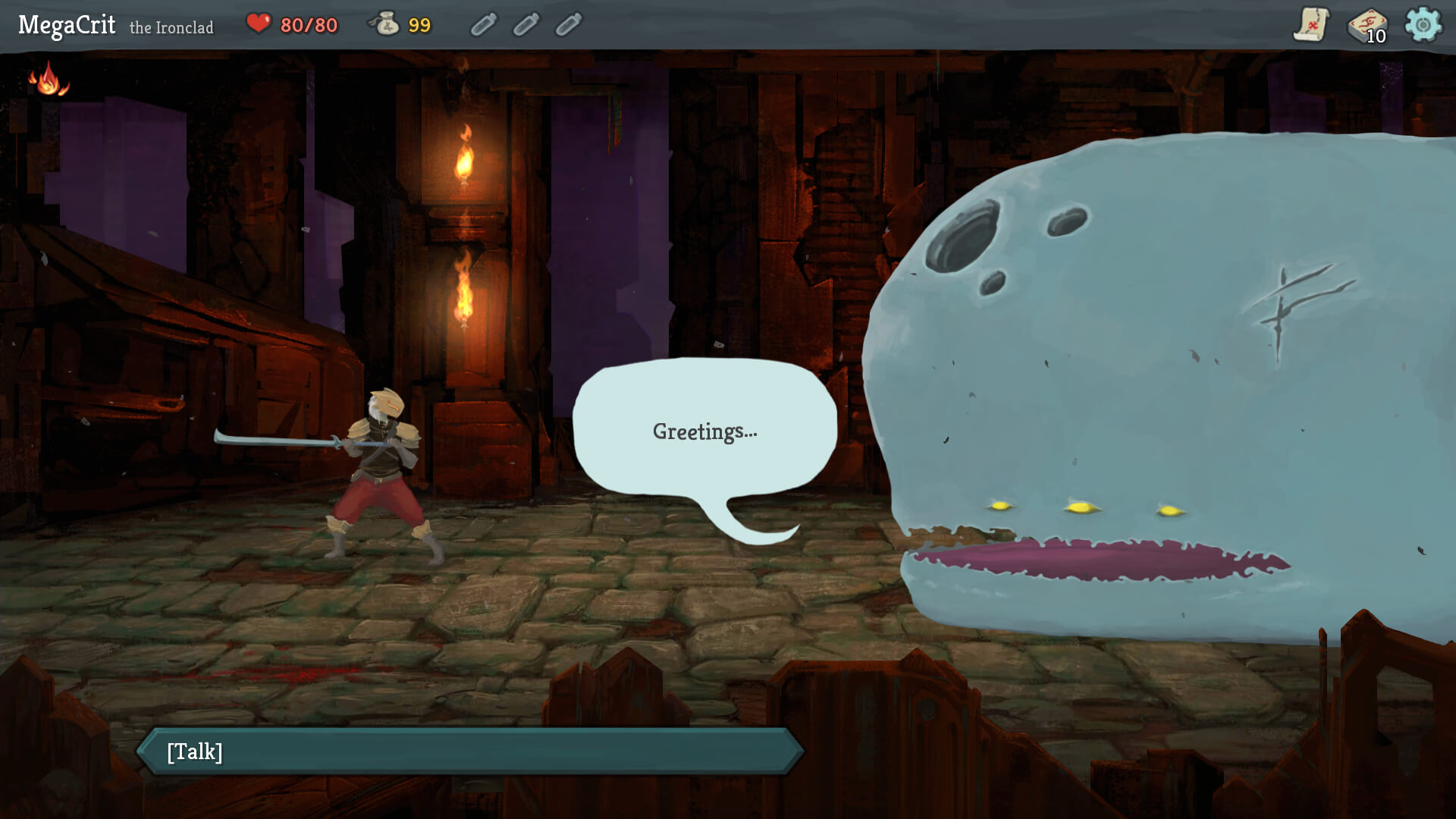
Enemies always display their next action above them, and that generally dictates the cards you’ll be playing that turn. Obviously you’ll focus on defensive cards when the enemy is preparing a big attack, while you’ll want to chain together huge, high damage combos.
Like with most deckbuilding games, you discard the remnants of your hand after each turn, so you’ll need to carefully plan around what potential combos you have in your hand, what you are likely to draw next, and what the enemy is plotting for their next turn.
Each enemy has their own interesting set of attack patterns, and many enemies will actually put negative cards in your deck. These range from harming you in some way when drawn, to just being a useless card put there to bloat your deck.
These cards are removed after the battle, but provide an interesting mechanic you’ll need to work around in many encounters. The game does a great job of throwing a wide range of unique and challenging enemies at you, and they all come with a variety of quirks and attack patterns.
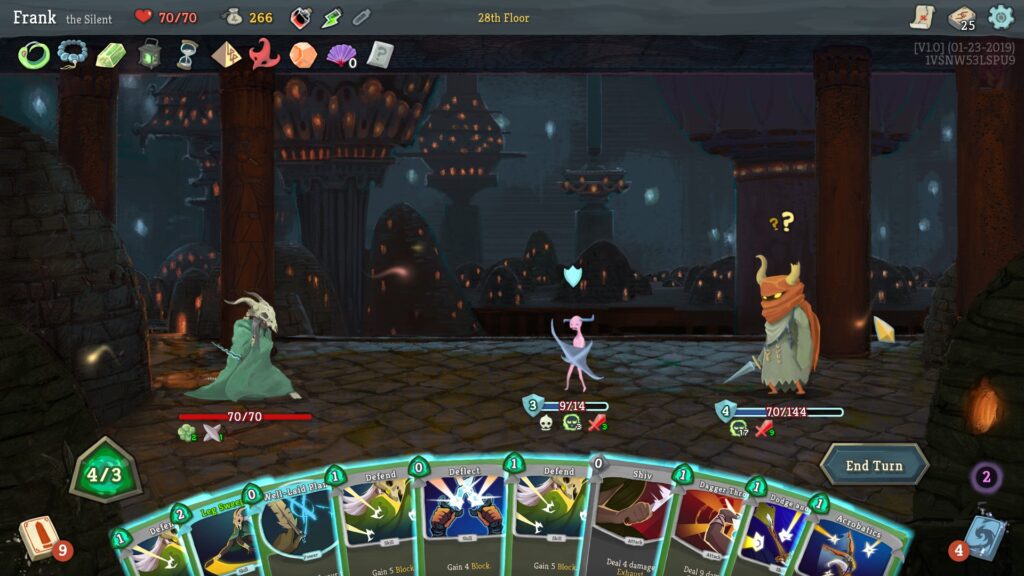
Another aspect of combat is potions. You can carry three potions at once, and they offer a single use bonus during combat. This could be anything from dealing damage to healing you. New potions can be acquired during random events as combat rewards, or purchased from vendors.
There’s a ton of buffs, debuffs, and other stats in play that alter the effectiveness of cards as well. Gaining Strength will increase the damage your attacks deal, while Dexterity governs the effectiveness of cards that generate Block.
The number of times you apply a buff or debuff will affect how many turns it stays in play. For example, two stacks of Weak means that the target will deal 25% less damage for two turns. Entire deck builds might be based around such buffs and debuffs, so learning the ins and outs of them is vital for success in Slay the Spire.
The game features three playable characters, each of which have a unique starting artifact and diverse playstyle defined by the cards you draft throughout your runs. The Ironclad is a expert fighter that focuses on building up his Strength stat and unleashing gigantic, powerful attacks.
The Silent is closer to what you’d expect from a rogue, and features loads of poke damage and poisons that slowly drain her enemies of their lifeforce. The Defect is by far the most complicated and unique character, and is based around various elemental Orbs that apply passive bonuses every turn, or can be evoked to exhaust the rightmost Orb for a stronger, immediate effect.
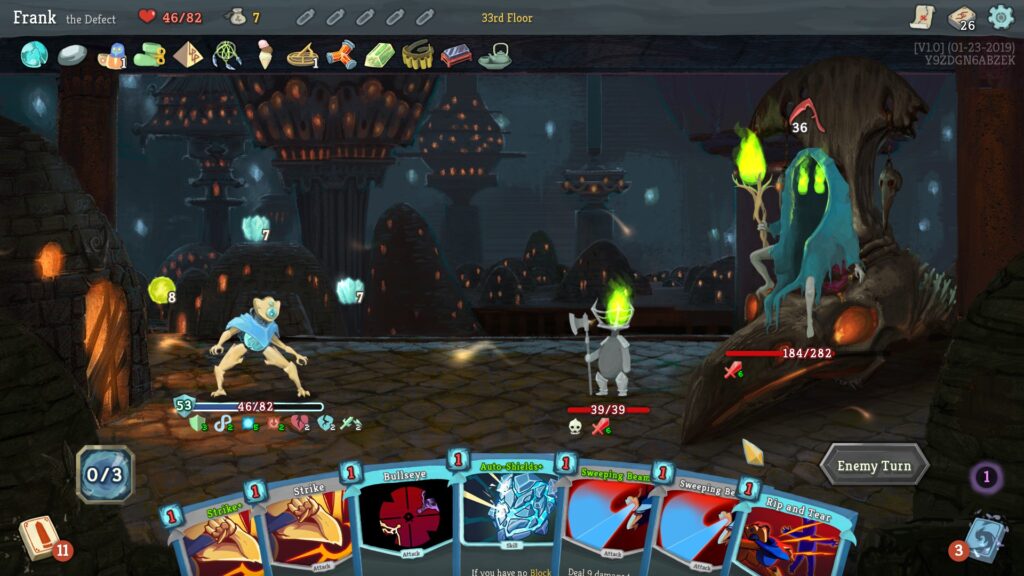
Each character starts with a very basic selection of weak cards that include four or five Strikes, a similar number of Defends, and a few starter cards unique to their class.
The starting cards are the least efficient at what they do, and as you build up your deck, you’ll want to look for opportunities to trash them at vendors or through random events.
You acquire new cards at vendors, after each battle, and during random events, and the cards you get will ultimately dictate the playstyle you focus on for that run.
A “jack of all trades” build is, in my experience, not particularly viable, so you’ll usually want to double down on the particular strengths of the deck you’ve accumulated, with maybe a few good cards unrelated to that playstyle thrown in to patch some of your weaknesses.

Relics are just as important as cards, and the relics you gather during a run could dictate the way you build your deck. Common and uncommon relics might offer minor buffs like giving you one Dexterity in combat, or giving you two extra Energy during the first turn of your next battle after visiting a campfire.
The rare relics you acquire from select events and after boss fights can potentially be so powerful they alter the way you play halfway through a run. Some might drastically increase the power of healing received during combat.
Others might allow you to transfer poison stacks between enemies, tempting you to focus a bit more on a poison-based deck. Some other relics might offer a one-time benefit like giving you gold or cards, after which point they become near useless.

Special mention should also be given to the game’s presentation and UI design. The animations are intentionally limited, but the art is crisp and there’s plenty of imaginative enemies to encounter.
The UI is very well designed, and features plenty of tooltips and icons you can hover over to answer whatever questions you might have regarding a mechanic or ability.
The bite-sized nature of each encounter and the ease at which you can stop and start a session would make Slay the Spire an awesome game to play on the go, and Mega Crit Games plans to bring it to Switch later this year.
One thing you’ll need to realize going into Slay the Spire is that it is a brutal, unforgiving roguelite where many of your runs will end in disaster. Bad luck, be it awful draws during combat or unlucky drafting options, will be a looming threat in every run.
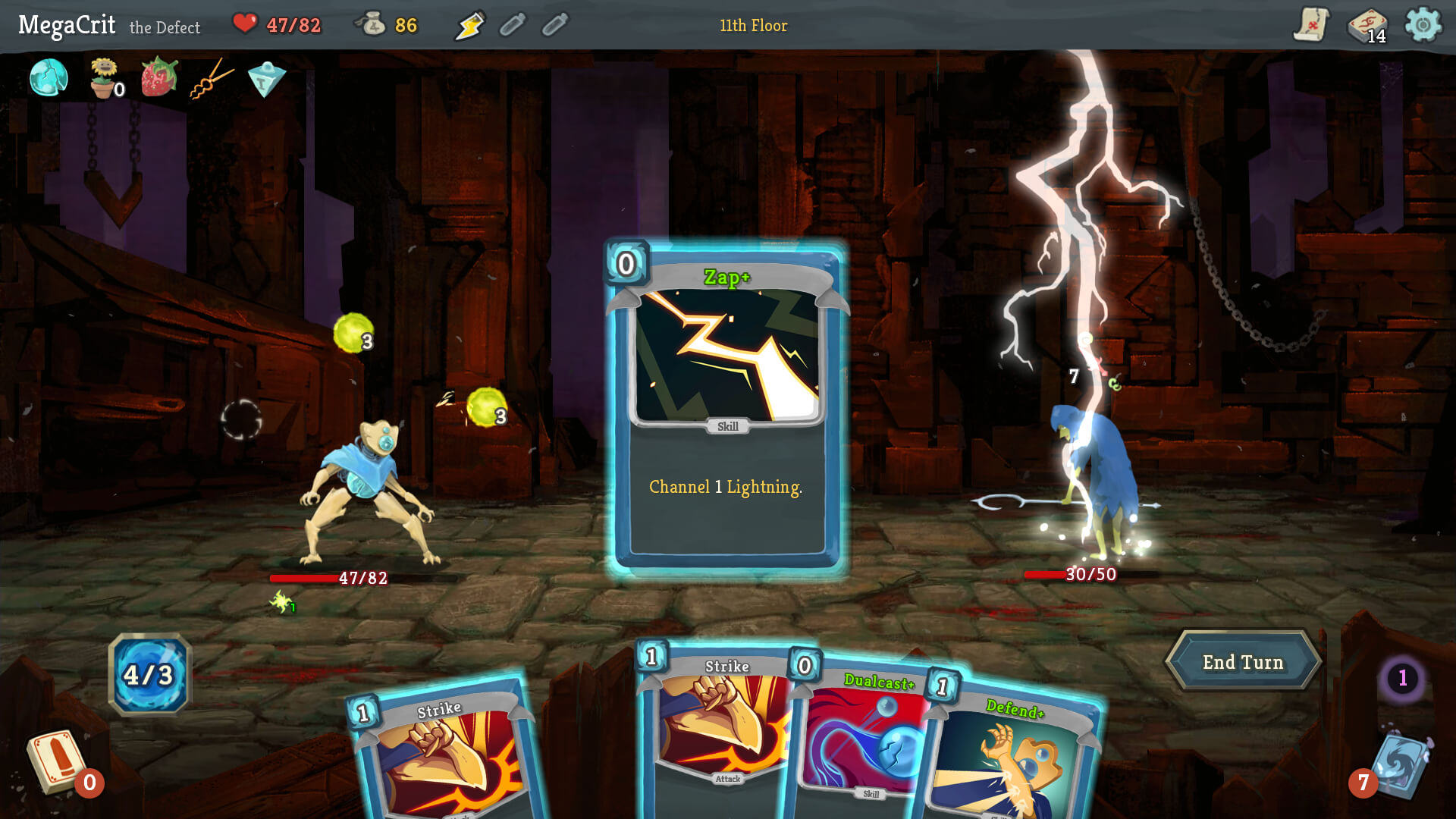
The higher level strategy of the game comes in learning the best cards to draft that benefit the deck you are building, which encounters you should risk given your current situation, and when to trash cards to optimize your deck.
When you are given a choice of cards to draft, you can always choose not to pick one, and this is often better than choosing cards that don’t fit in your deck that may result in useless draws during combat.
This immense difficulty means that each completed run is that much more satisfying. By default, a run is normally three levels, but that’s just the surface of Slay the Spire. The real content comes after you complete your first run and unlock Ascension.
This adds an additional level each time you complete a run, and your goal is to climb as high as you can in this increasingly punishing game. There’s also daily and weekly challenges, complete with worldwide leaderboards.
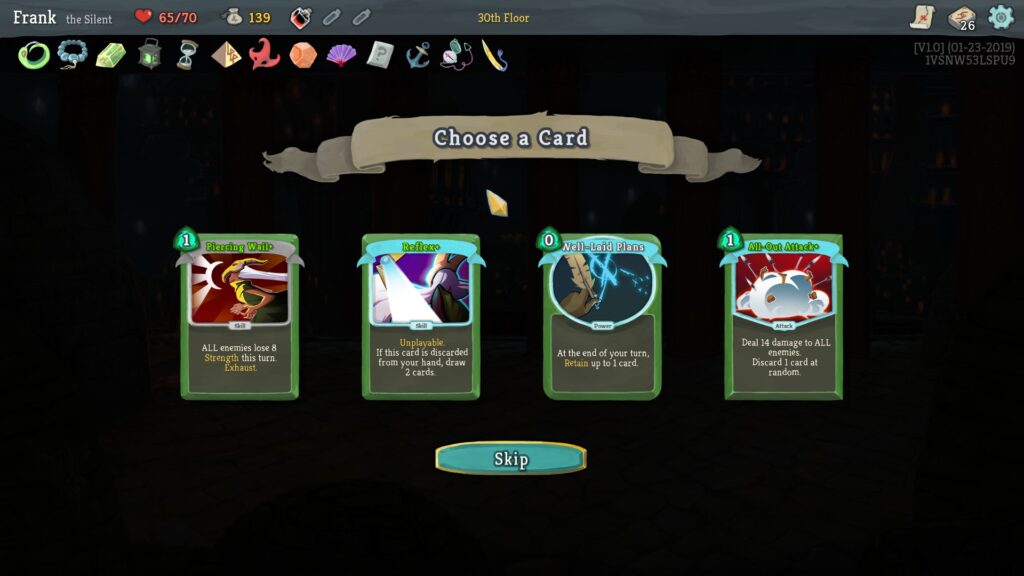
Your enjoyment of Slay the Spire will ultimately come down to how much you enjoy its core gameplay loop, because like with all roguelites, you’ll essentially be playing the same content over and over again.
There’s a good variety of enemies, cards, random events, and relics to discover, but if you are awful at the game (like me) then you’ll be playing through the same few levels a lot, and eventually you’ll start seeing the same encounters quite often.
If you don’t like roguelites with a fairly high reliance on randomness, then you’ll probably hate Slay the Spire. The game’s strategy is all about how to lessen bad RNG and make do with what hand you are dealt, both literally and figuratively.
There will be many runs where you won’t really have much of a chance, and if that might turn you off. However, Slay the Spire still offers a nice variety of content, an addicting card-based combat system, and a compelling gameplay loop that will keep you coming back for more punishment.
If you like deckbuilding games and roguelite randomness, then you really need to add Slay the Spire to your collection.
Slay the Spire was reviewed on PC using a review copy purchased by Niche Gamer. You can find additional information about Niche Gamer’s review/ethics policy here.